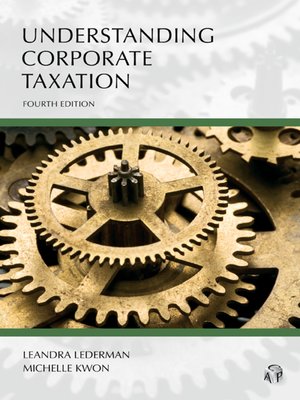
Sign up to save your library
With an OverDrive account, you can save your favorite libraries for at-a-glance information about availability. Find out more about OverDrive accounts.
Find this title in Libby, the library reading app by OverDrive.



Search for a digital library with this title
Title found at these libraries:
| Loading... |
This clearly written treatise is designed to make the complex subject of corporate taxation very accessible. It uses straightforward language, charts, checklists, diagrams, and numerous examples to aid readers' understanding, and the fourth edition is fully updated for the 2017 tax changes and the Coronavirus Aid, Relief, and Economic Security Act (CARES Act). Understanding Corporate Taxation also includes discussion of relevant cases. It is designed to supplement any corporate tax casebook or to be used on its own.
The book starts with an introductory chapter that discusses the choice of business form; details the general principle that corporate profits are subject to double taxation (once at the corporate level and again at the shareholder level); introduces the Qualified Business Income deduction; and discusses the basics of anti-abuse rules, such as the step-transaction doctrine. Those anti-abuse rules are explored in more detail in a later chapter, as are proposals to partially or fully eliminate double taxation.
The next several chapters are organized using a cradle-to-grave approach that traces the life cycle of a corporation, beginning with formation and capitalization and ending with liquidation of the corporation. Between those events, the book discusses operational issues, including the capital structure of a corporation, distributions of cash or property, stock redemptions, and stock dividends. After corporate liquidations, the book explores more advanced topics, such as taxable stock or asset acquisitions; non-taxable corporate reorganizations and divisions; the carryover of tax attributes (such as net operating losses) following certain non-recognition transactions; and the treatment of corporate tax shelters. In addition, a chapter addresses the taxation of S corporations, which generally provides a single-tax paradigm. That chapter also discusses the Qualified Business Income deduction in detail, including several examples.






